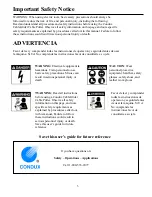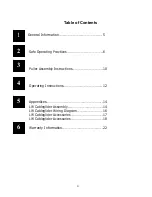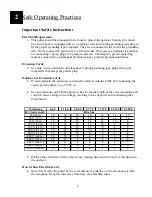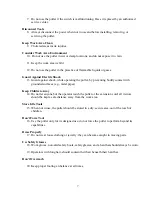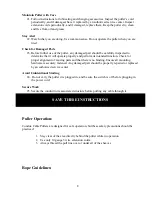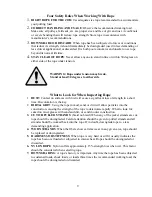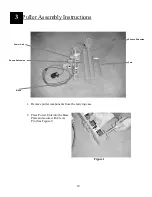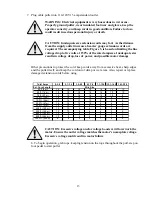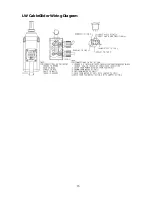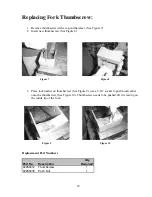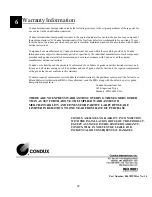
9
Four Safety Rules When Working With Rope
1.
RIGHT ROPE FOR THE JOB:
Use adequate size rope recommended to accommodate
your pulling load.
2.
CORRECT HANDLING AND USAGE
: Observe the recommended working load.
Make sure all pulleys, fairleads, etc. are proper size and free of grit and rust. Avoid knots
or severe bending that will reduce rope strength. Store rope in accordance with
manufacturer’s recommendations.
3.
DOWNGRADE OR DISCARD
: When rope has been subjected to forces or conditions
that reduce its strength, it should immediately be downgraded (used in less demanding or
less critical applications) or discarded. It is both poor economics and unsafe to use rope
beyond its normal lifetime.
4.
STAY CLEAR OF ROPE
: Never allow anyone to stand in line or within 30 degrees on
either side of the rope under tension.
WARNING: Rope under tension may break.
Stand at least 30 degrees to either side
What to Look for When Inspecting Rope
1.
RUST:
Contact on surfaces with rust will cause a significant loss of strength in a short
time. Discoloration is the key.
2.
DIRT & GRIT
: Using the rope in mud, sand, or dirt will allow particles into the
construction, causing the strength of the rope to deteriorate rapidly. What to look for:
caked on mud, grease with sand and dirt, or sand in outer construction.
3.
CUT OR PULLED STRANDS
: (braid no braid) When any of the jacket strands are cut,
rope should be downgraded. Careful attention should be given to pulled strands and all
strands should be worked back into the rope. If in doubt, downgrade rope to a less
demanding application.
4.
WORN STRANDS
: When the fibers show extreme wear in any given area, rope should
be replaced or downgraded.
5.
HARDNESS OR STIFFNESS
: When rope is very hard or stiff it usually indicates the
rope has been overloaded or subjected to intense heat. Rope should be downgraded or
discarded.
6.
NYLON ROPE
: Nylon suffers approximately 15% strength loss when wet. This factor
should be considered when selecting rope.
7.
DOWNGRADING
: A rope’s history is important. Anytime the rope has been subjected
to sustained loads, shock loads, or loads three times the recommended working load, the
rope should be downgraded or discarded.
Содержание CableGlider LW
Страница 1: ...USER S GUIDE SAFETY MANUAL CableGlider LW Cable Puller...
Страница 2: ...2...
Страница 14: ...14 Appendices LW CableGlider Assembly 5...
Страница 16: ...16 LW CableGlider Wiring Diagram...
Страница 19: ...19 NOTES...
Страница 20: ...20 NOTES...
Страница 21: ...21 NOTES...



